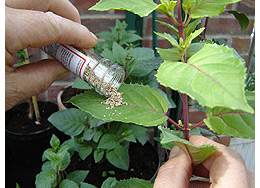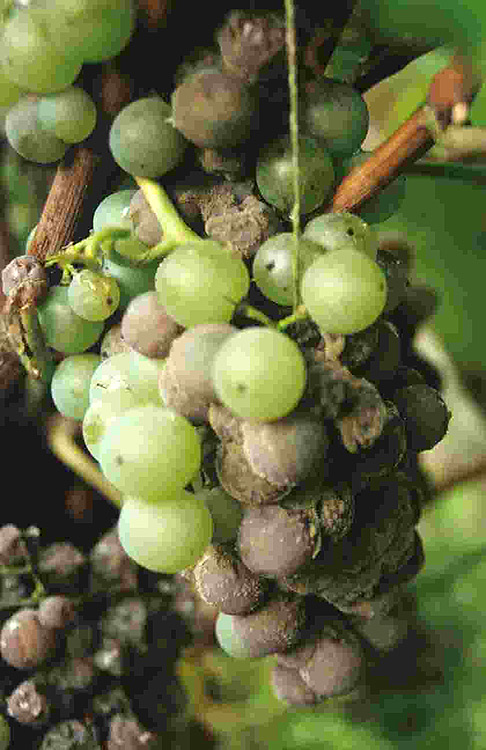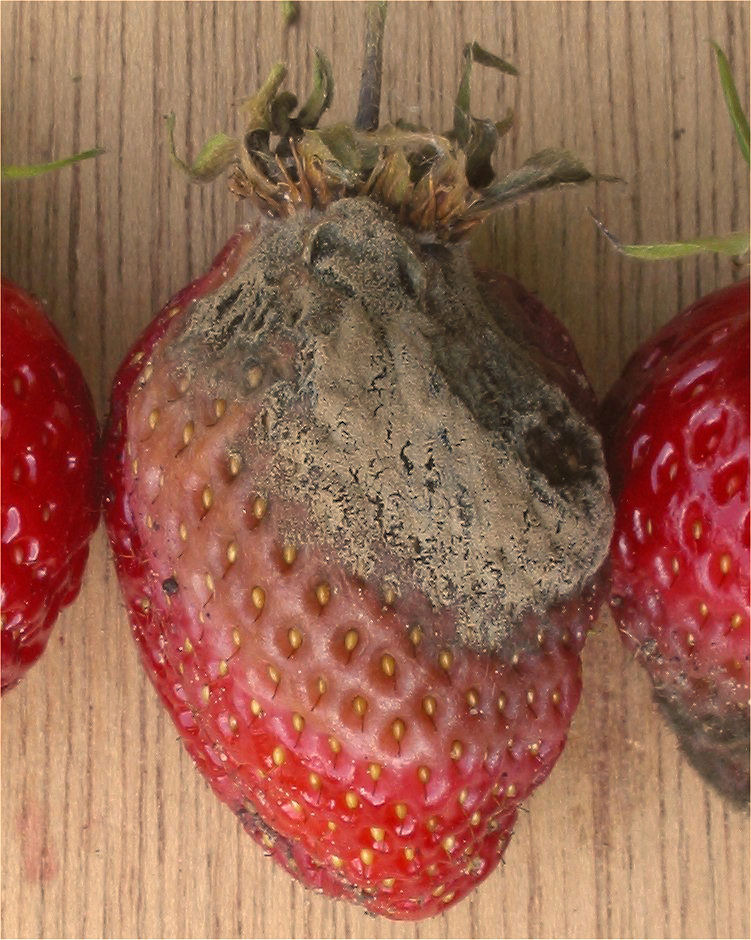Grey Mould - Botrytis - plant fungal disease
Signs - Stems, fruits and flowers become covered with a velvety greyish, fungal growth (that looks particularly unpleasant)
Damage - A very common fungus which produces spores that are always around in the air. They attack plants through areas of damage. At first, small pale brown or white patches appear as the flowers start to rot.
Treatment - A fungal disease so one of the best ways of dealing with it is by good hygiene. Remove all dead leaves in autumn to prevent the spores from over wintering, burn the leaves or take them to the tip rather than use them for compost or you may well just perpetuate the problem.
Controlling this fungus is very difficult because it is so widespread so it's more a question of prevention rather than cure. Affected areas of the plants should be cut out and disposed of or burnt. Spraying with a fungicide is rarely of any use.
It sometimes affects flowering or fruiting plants in damp warm conditions. It is spread by spores that are produced very quickly and move from one part of the plant to another, an infestation is often not a single case of the disease spreading through the plant, but rather many separate small cases on individual leaves, flowers buds or fruit. Improve ventilation where possible, open windows in frames and greenhouses, prune over-congested shrubs to aid air flow, remove affected regions as soon as possible to prevent them spreading more spores, remove dead flower heads, fruit, leaves etc.
There is a form of Botrytis known as "noble rot", this form affects wine grapes that become infected when ripe and when conditions become very dry. These grapes then can produce a very fine and concentrated sweet wine. In some vineyards the spores are spayed over the grapes to infect them.
Convalescence care - Plant diseases are often difficult to address directly, but you can help your plants get through an illness with some pampering and attention:
1 - Clear the base of any other plants, loosen any tight ties and add mulch. Make a circle of bare soil around the base of the trunk to at least a radius of 30cm (1ft), cover this with a thick layer of mulch, though don't pile it up against the trunk so it can "breathe".
2 - Give the plant a feed, a full watering cans worth, 10L or 2 gallons of suitably diluted liquid feed.
3 - Water regularly if there's no rain, a full watering cans worth once a week if it doesn't rain or if there's only a sprinkle. NOT if the soil is already damp though.
4 - Trim other nearby plants, it may be that your plant is struggling in the shadow of other larger plants and isn't getting enough light to build its strength, which plant do you want the most?

Insect
hotel / house
A sheltered insect house to help a range of beneficial
insects to over-winter in your garden. If they are over-wintering there,
they are in an ideal position come the spring and summer to wake up and
help to combat any pests you may have. Amongst others, good for ladybirds,
lacewings and solitary wasps which will help keep your unwanted garden visitors
down. Place in a sheltered place outdoors.

Biological
Pest Control - Organic living pest control for a variety of
problems, red spider mite, whitefly, fungus gnats (sciarid fly), thrips, mealy bug,
vine weevils and more.
These are parasites or predators that will specifically infect the pest they are brought in to control without harming any other living things and without the use of chemicals. A small population of pests needs to be maintained so that the control agent doesn't die out.

Chemical insecticides - If your plants get a heavy infestation, then I think it's acceptable to use a chemical insecticide as a "smart missile" just on that particular plant. I resort to this when the aphids build up under cover on my favourite plum tree, or other plant/s. Don't overdo it and spray too often and don't spray the whole garden "just-in-case", buy a small 1L or thereabouts sprayer so you don't get carried away.
Not pest specific.
Picture credits: Botrytis strawberry - Aardbei Lambada vruchtrot - published under GNU Free Documentation License, Version 1.2 / Botrytis grapes - Kassander der Minoer - published under GNU Free Documentation License, Version 1.2
Copyright 2000 - present. All Rights Reserved | Privacy Policy Statement


